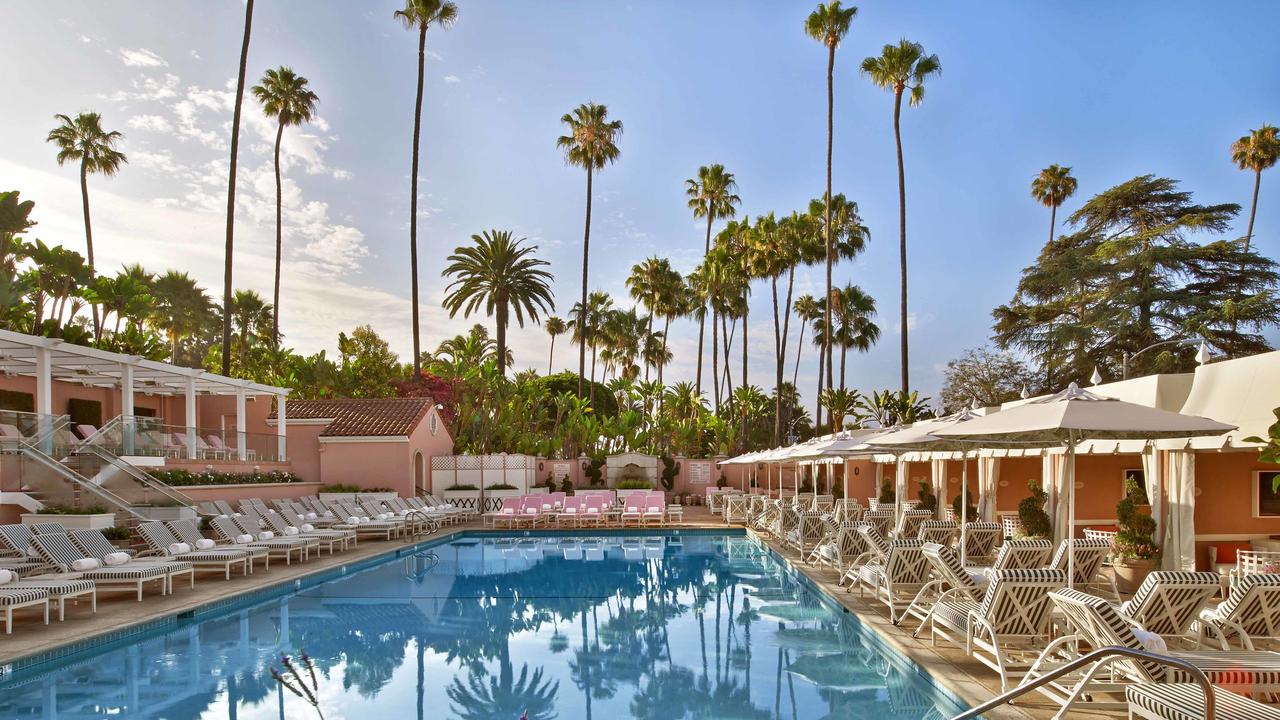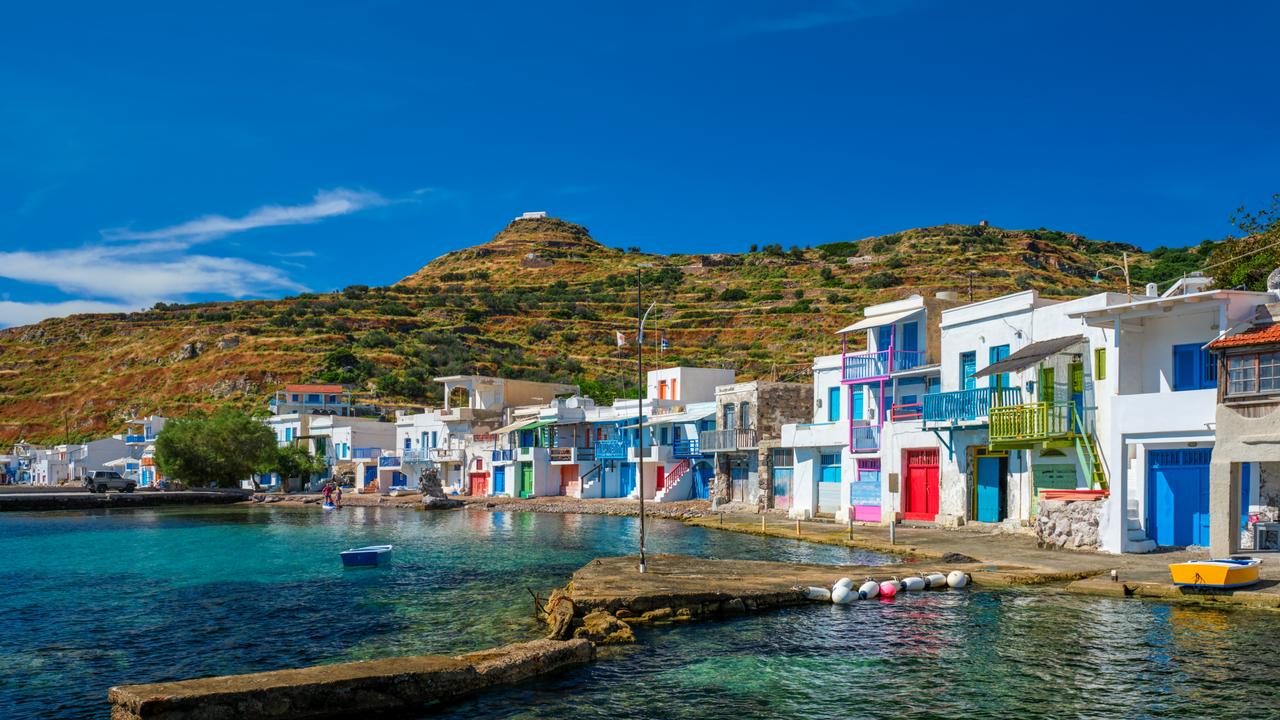The secret is out about the island of Leros in Greece
This undiscovered Dodecanese gem has a leisurely pace, crystal-clear coves and should be at the top of your 2024 Euro summer wish list.
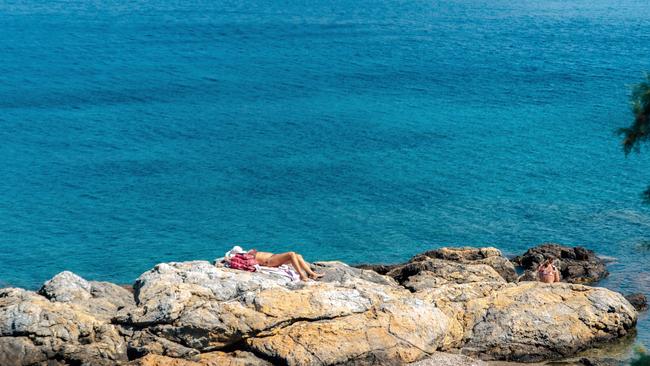
“I think you’ll need a jacket,” says Olivier Gougeon as we gather in the garden of Villa Clara, the neoclassical mansion on the Greek island of Leros that he and his wife, Marie-Hélène Moawad, have turned into a bed and (sometimes) breakfast. We’re heading to the beach on a warm spring day, so I shrug off the suggestion. “You haven’t seen the car,” quips Moawad. The car turns out to be a blue Pony buggy with no roof, towelling seats, and flimsy steel doors that fly open as we trundle up the hill towards Panteli bay. Nicknamed “the poor man’s Jeep” and dating from the 1970s, the Pony is one of just a few cars to ever be made in Greece. It’s the perfect vehicle for Leros, an island with an unpretentious atmosphere that harks back to a more innocent age. An interior designer would pitch the peeling, multi-coloured houses as “shabby chic”, a tour operator would call the slow pace and warm welcome “authentic”, and a real estate agent would characterise the scrappy seaside villages as “lived-in” – an apt description for an island with a dynamic, year-round population of around 8000.
Off season, most Greek islands are deserted. Not Leros, where the waterfront tavernas on pebbly Panteli are abuzz with local families, fishermen untangle their nets on the dock and stout ladies in frilly hats gossip knee-deep in the sea. The antithesis of the package resorts and rowdy nightlife on the neighbouring Dodecanese islands of Kos and Rhodes, Leros has never been dependent on tourism. Occupied by the Ottomans for centuries, Leros’s locals turned to the sea: they fished, joined the merchant navy, or made fortunes trading cotton in Egypt – and built handsome mansions on Leros for their summer holidays, some of which (like Villa Clara) are now guesthouses.
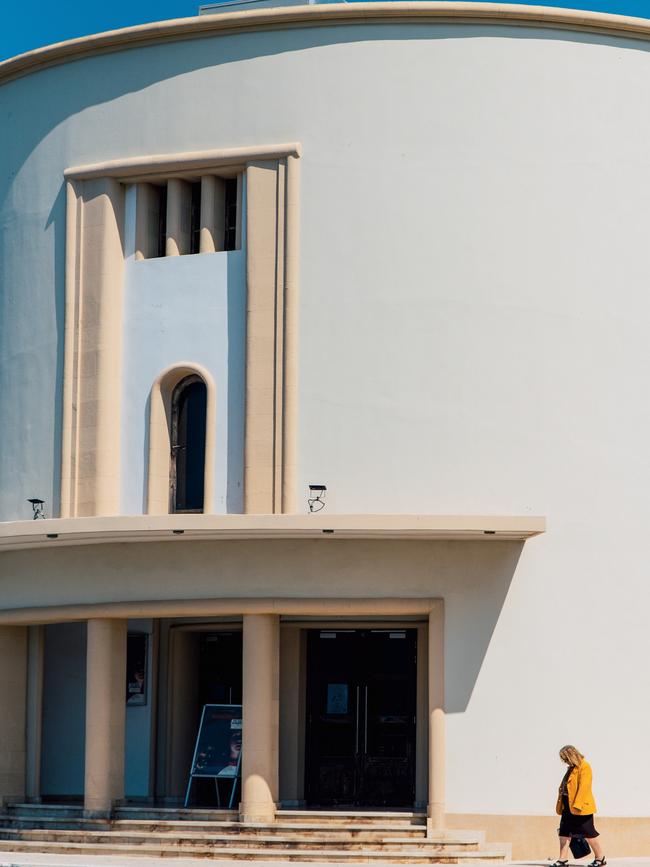
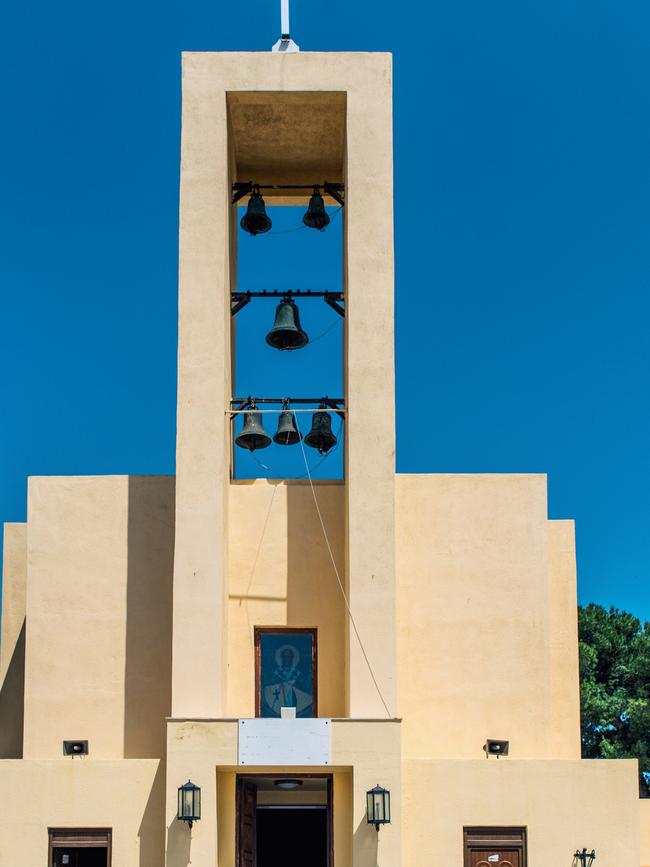
-
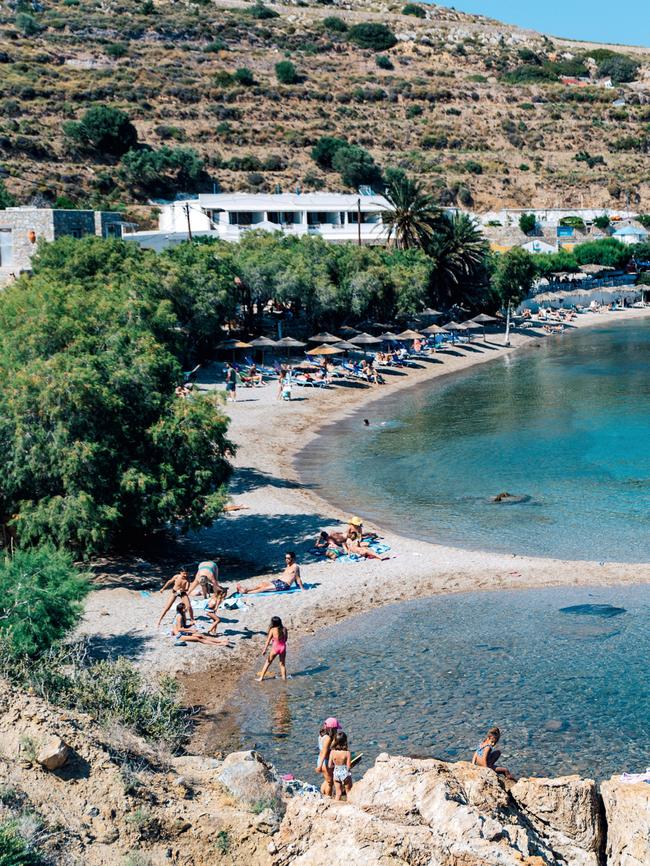
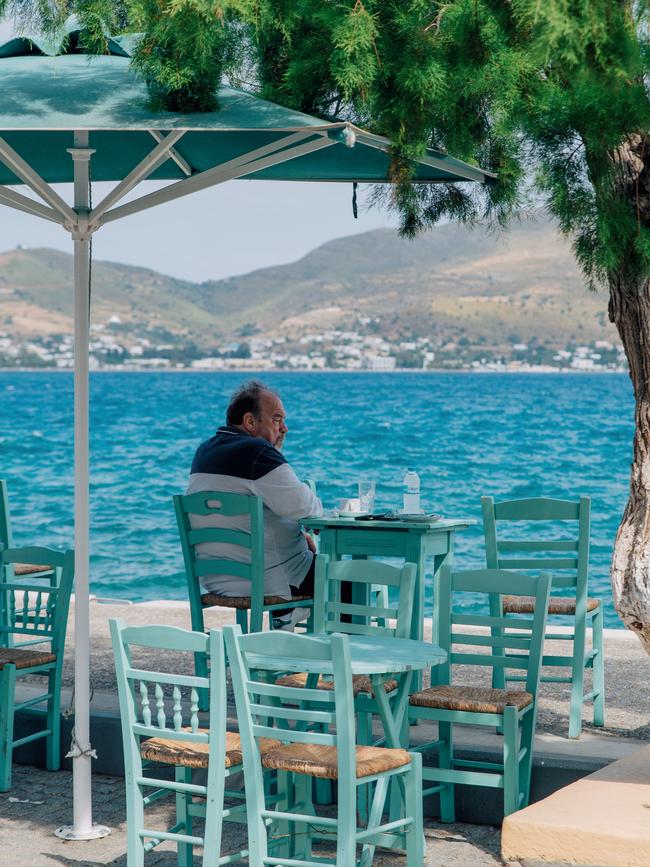
When the Italians came along in 1912 (occupying the island until 1943), Leros became the flagship of Mussolini’s Fascist ambitions in the Mediterranean. The dictator dispatched two architects from Rome to build Portolago, a harbour town designed to accommodate thousands of military personnel and their families. With wide boulevards, curvaceous civic buildings, and palazzini (little palaces) for high-ranking officers, Portolago is a curious mélange of rationalism, modernism, Bauhaus and Art Deco styles. The original cinema, school, and hospital are still in use, but other landmarks such as the circular market and town hall are in desperate need of restoration.
“This whole area was just a swamp until the Italians came along,” says Nicos Phocas, as we survey the surreal town, now called Lakki, from the top of the brick-clad clocktower, where all four clock faces show different times. Phocas, a former real estate broker, is an entertaining encyclopedia of all things Lerian. He points out the abandoned Italian barracks in Lepida, across the bay, which later became a notorious psychiatric hospital, a prison for political exiles during Greece’s military dictatorship, and more recently a refugee camp. (The EU has built an unsightly detention centre for refugees nearby.)
A source of trauma and shame, these institutions have also been major providers of employment for the locals. “They cared for anyone who was sent here without discrimination,” says Phocas. “In a way, bad publicity was good publicity for Leros, because it has kept the island genuine and kept mass tourism at bay.”
The Greek Ministry of Culture recently announced a strategic plan to transform the derelict buildings in Lakki and Lepida into a wellness and rehabilitation centre, a Mediterranean academy for social entrepreneurship, and a hub for year-round activities that spotlight the island’s unusual architectural and cultural history. The scars of the Second World War all over Leros make for astonishing sightseeing – from underground bunkers and underwater wrecks to crumbling lookouts squatted in by shepherds, and tanks rusting in the mountains, abandoned during the Italians’ last stand in 1943.
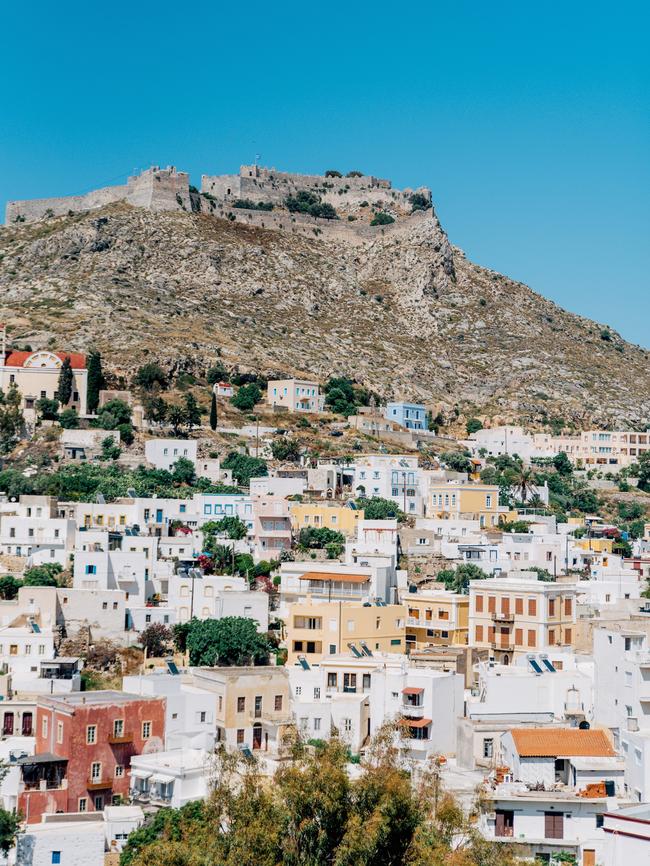
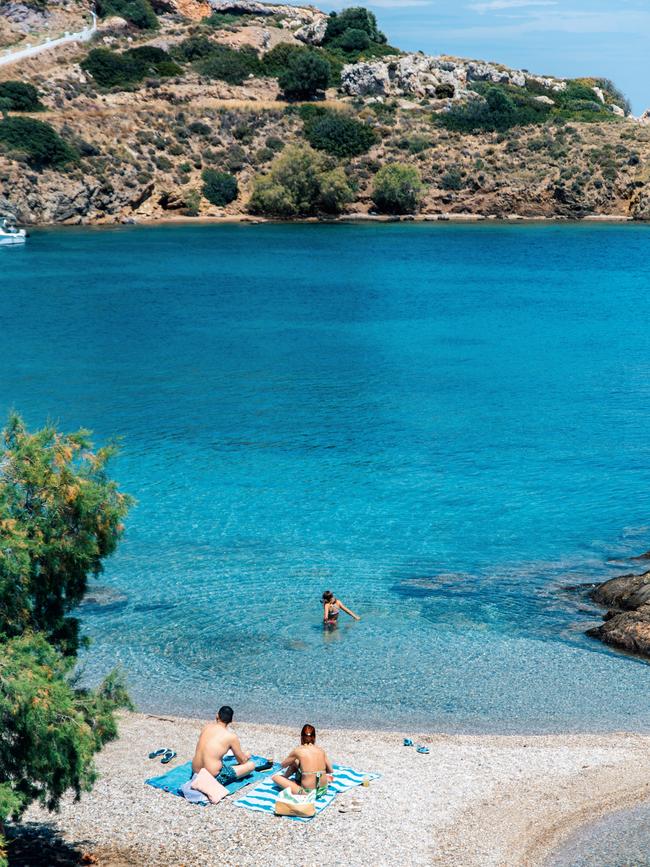
-
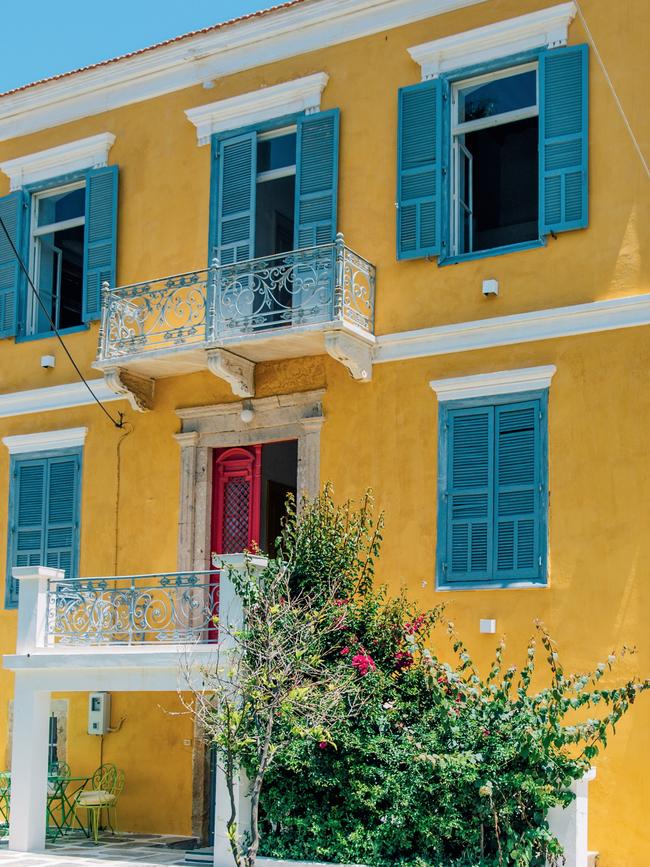
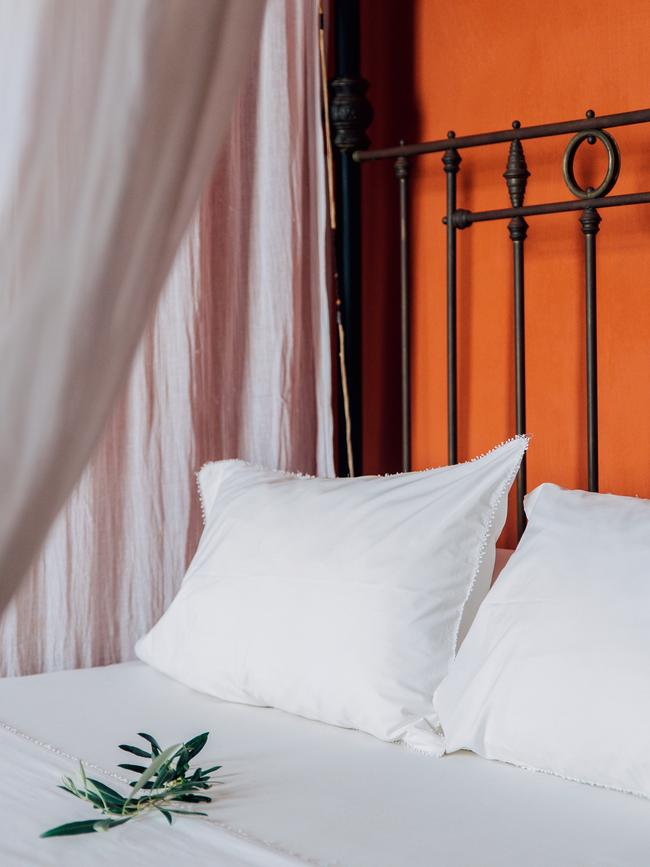
“As teenagers, we used to do drag races inside the abandoned bunkers,” says Harris Karpathakis, a member of the local Vespa Club, another legacy of the Italian occupation. Karpathakis owns the wryly named Harris Bar, a converted windmill below the medieval Castle of Panagia. A pâtissier, he also helps run To Paradosiako, his family’s excellent sweet shop in Agia Marina, the island’s other natural harbour. With colourful cafés and houses lined up along the waterfront, Agia Marina is an attractive proposition for idlers, romantics and sailors. Yachts cruise over from Bodrum in Turkey, just a few nautical miles away, to eat at Mylos by the Sea, one of the best restaurants in Greece.
It’s almost impossible to eat badly on Leros, where the food is often exceptional – such as the squid-ink risotto at Artemis taverna on Blefouti Beach; the stewed octopus at Psaropoula, where tables are wedged into the shoreline; or the spicy carrot soup at Lyxnari, where the charming owners give me a bouquet of herbs from their organic kitchen garden as a parting gift.
It’s these spontaneous gestures of kindness to strangers that make Leros so special. When my plans to take a boat trip to Archangelos island for lunch at the castaway taverna fall through, Tasos Karpathakis, the amiable, shaggy owner of Zephyros beach bar, comes to the rescue. “I don’t have a boat, but I have a pedalo,” he says.” If you’re prepared to pedal, I’ll take you to a secret beach.” It’s an offer too good to refuse – and, like Leros itself, the effort to get there is half the reward.
TOP TABLES
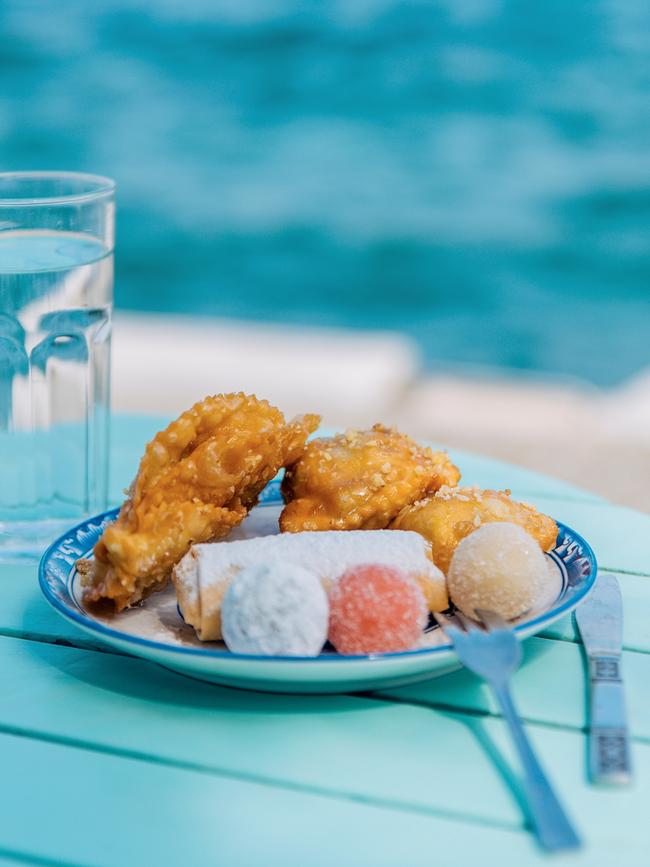
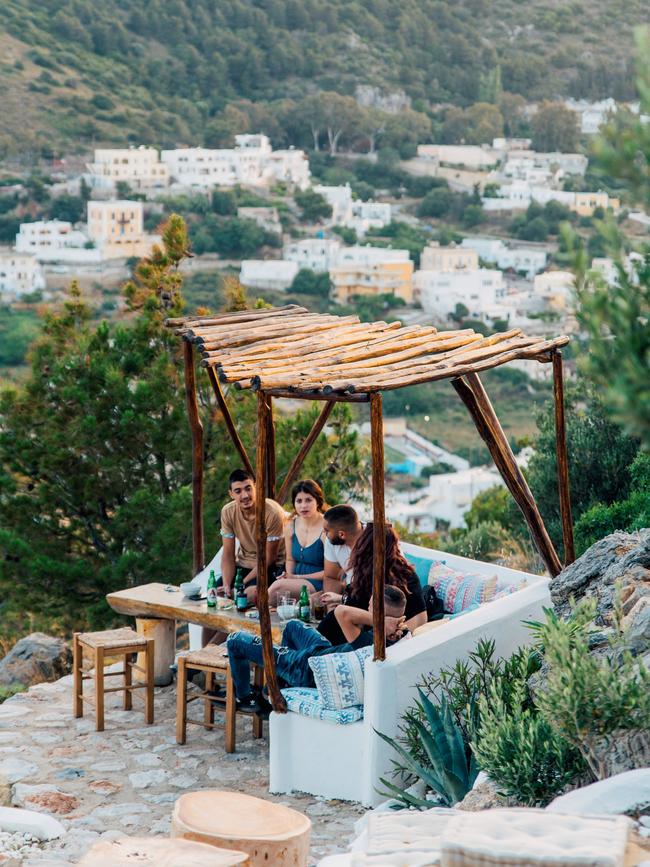
Mylos by the sea: The setting is as sensational as the food at this destination restaurant – two terraces overlooking a windmill jutting out to sea. Creative seafood dishes include calamari à la carbonara with swordfish “bacon”, amberjack in ginger and soy, or a “head-to-tail” fish cooked eight different ways. Order as many sharing plates as you can handle – you’ll want to try everything. mylosbythesea.com
Psaropoula: The pick of the excellent tavernas on Panteli Beach, this friendly, family-run fish restaurant has been feeding its loyal clientele fish soup, octopus stifado, and salted mackerel (a Lerian speciality) since 1962. +30 224 702 5200
Harris Bar: Not Venice, but an equally ravishing place for a sunset Spritz, a converted windmill with tiered terraces overlooking the Aegean. Instagram: @harrisbar_leros; +30 693 682 8615
To Paradosiako: This waterfront pâtisserie is the spot for people- and boat-watching. Try the patsavouropita (syrupy filo and yoghurt cake) or the fluffy cheese pie. +30 224 702 5500
Lime: Stavros Karpathakis honed his bartending skills in Rome, before opening this laid-back beach bar overlooking Merikia bay. Go for an aperitivo of Greek cheeses, Italian charcuterie, and a Piña Colada made with fresh pineapple. +30 694 736 4886
Lyxnari: At this local favourite in Lakki, both the food and atmosphere have a homely feel. Daily specials might include inventive ceviche and seasonal salads from the organic kitchen garden. +30 695 534 2477
Zephyros: Chilled drinks, chilled vibes, and amazing views to Agia Marina. This beach bar is a local institution on Dio Liskaria, one of Leros’s best beaches. Instagram: @zephyros_beach_bar; +30 224 702 5200
Ouzeri O Sotos: Perfectly positioned for sunset, this seaside ouzeri is straight out of the 1970s. Order the grouper souvlaki and whatever shellfish the owner has caught that day. Instagram: @osotoslero; +30 224 702 4546
Thea Artemis: The squid-ink risotto, slow-roasted eggplant, and zucchini fritters are exactly what you need after a long swim and a siesta under the tamarisk trees on Blefouti Beach. +30 224 702 4253
WHERE TO STAY
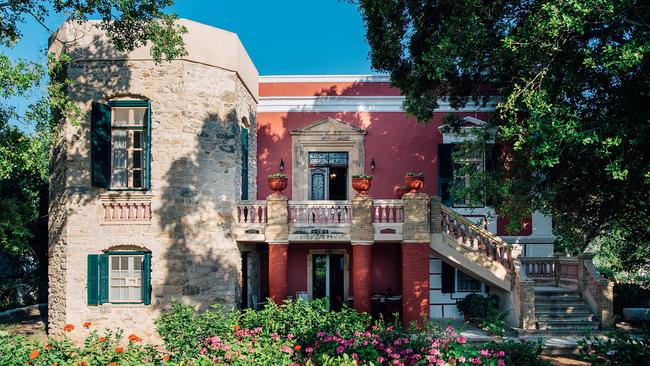
Villa Clara: With an eclectic art collection and playful interiors, this maison particulière is anything but traditional. A sunflower-yellow staircase leads to seven high-ceilinged rooms with flamboyant wallpaper, clawfoot bathtubs and clusters of blown-glass chandeliers. The vibe is sociable and lived-in, with the owners and their kids living on site (unless you book the whole house). Doubles and suites from €330 to €490, not including breakfast. villaclara.fr
Archontiko Angelou: Chock-full of retro charm, this romantic hideaway is like stepping into a period movie. Airy bedrooms with painted ceilings, patterned tiles, and iron beds dressed in crisp white linens are surrounded by glorious gardens. The strictly vegan breakfast features produce from the estate: orange and guava smoothies, plum, geranium, and apricot preserves, all handmade by the thoughtful, softly spoken owner, Marianna Angelou. “Leros is not an obvious island,” she says, “so it attracts more interesting people.” Doubles from €90 to €150, not including breakfast. hotel-angelou-leros.com
La Casa di Colori: In the twisting alleys of Platanos village, this guesthouse is as colourful as its name suggests. Built in 1907, the mansion is set in a walled garden where breakfast is served on vintage silverware. The best rooms are on the upper floors, with stunning views of Panagia castle and Panteli bay. Suites from €100 to €170, including breakfast. lacasadicolori.gr
Casa Leros 1850: Cocooned by thick stone walls and secluded garden, this whitewashed cottage is cool and peaceful even in high summer. With a hammock slung under a ficus tree, and Alinda bay at the end of the lane, this is rustic simplicity at its best. Sleeps five, from €250 to €280 per night. Instagram: @casaleros1850
GETTING THERE
There are direct one-hour flights from Athens to Leros with Aegean Air (en.aegeanair.com). Or fly to Kos (1.5 hours ferry ride from Leros), or take the 9.5-hour ferry (bluestarferries.com) from Athens.

